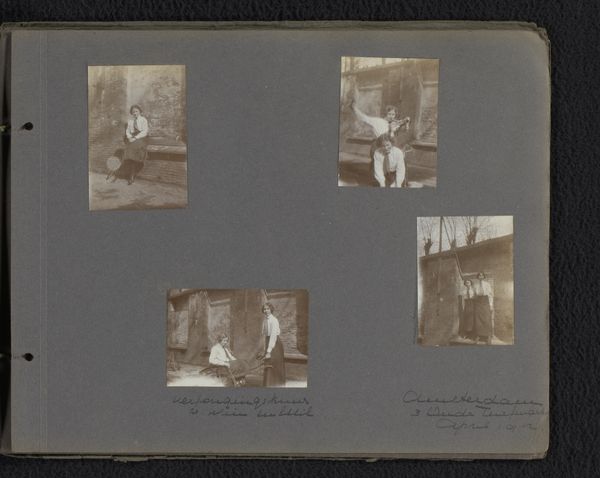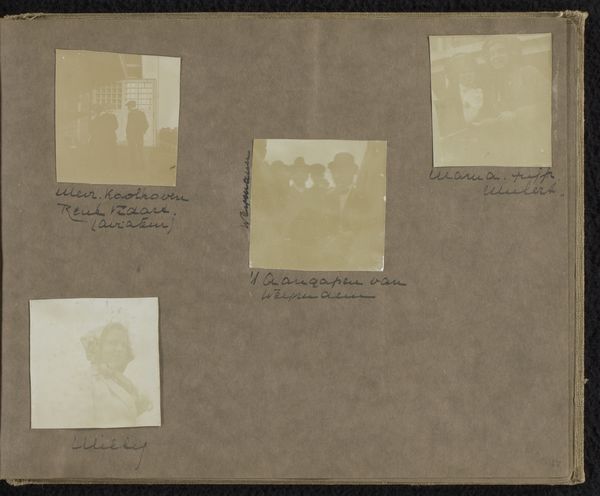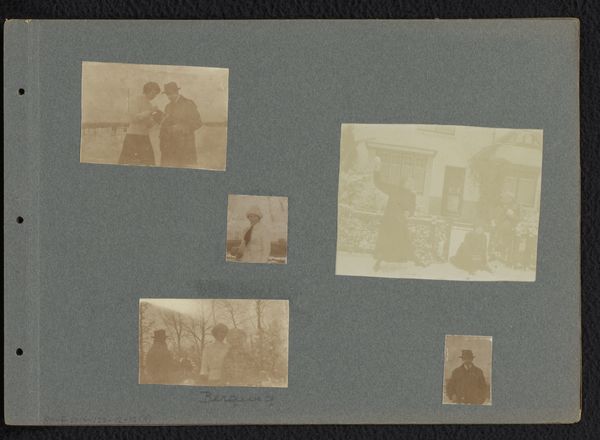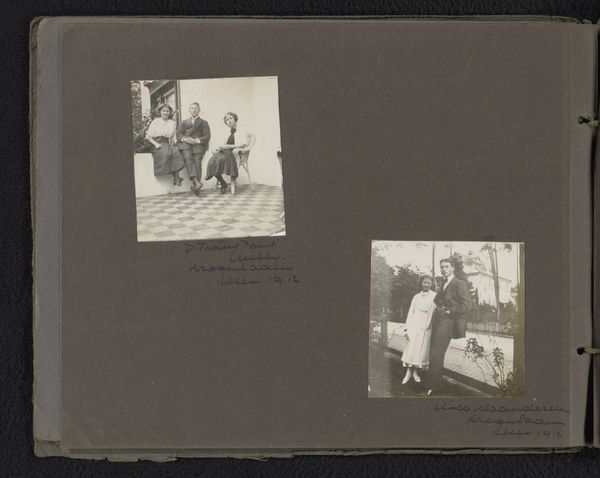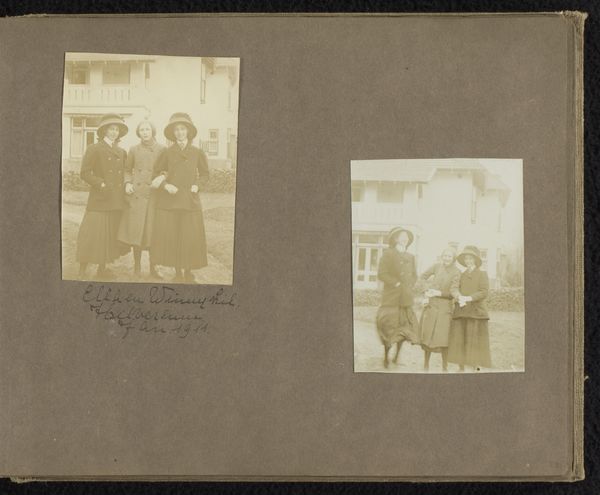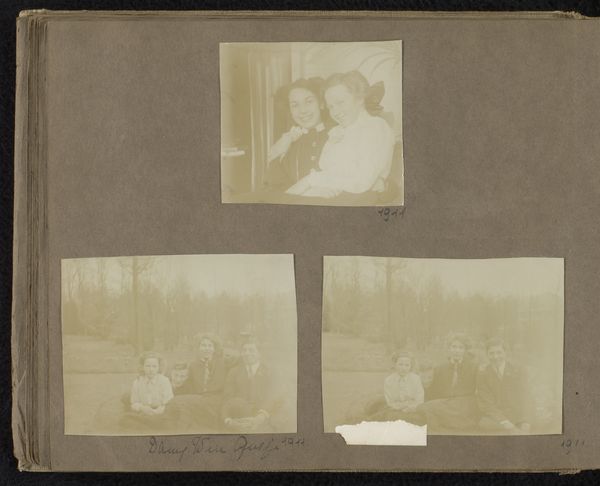
Drie portretten van Guly Boissevain, Caty van den Wall Bake en anderen 1909 - 1910
0:00
0:00
Dimensions: height 203 mm, width 253 mm
Copyright: Rijks Museum: Open Domain
Curator: Here we have "Three Portraits of Guly Boissevain, Caty van den Wall Bake and Others" by Carolina (Loentje) Frederika Onnen, made between 1909 and 1910. They appear to be gelatin-silver prints arranged on what looks like a sketchbook page. Editor: It's like looking into a faded memory. The sepia tones and the way the photographs are casually pasted down evoke a strong sense of nostalgia, almost melancholic. Curator: I agree. Consider the materiality: aged paper, gelatin silver. Onnen wasn’t making grand statements, but meticulously recording her social circle through the burgeoning technology of photography. This was likely a personal album. Editor: The composition also contributes. Notice the deliberate arrangement – three distinct portraits, each with their own light and shadow play. The textures, though muted, offer such a rich tonal scale from deep blacks to almost translucent highlights. Curator: Yes, and the placement isn’t random. Onnen seems to be inverting expectations. "High" art prioritized studio work. This celebrates a more workaday approach that elevated domestic labor, photography. It democratized the medium in many ways. Editor: True. Semiotically, though, the portraits capture individual characteristics—each subject poses differently, exuding their unique personality, although somewhat blurred and intangible, still speaking across the years. The muted color palette works perfectly to support this idea of removed lives. Curator: It speaks volumes about the transition into the modern age, the changing social landscape and the means by which individuals navigated and represented their identities through personal albums, in contrast to formalized modes of art making. The lack of adornment only adds power. Editor: I now see the artfulness. While unassuming, its deliberate construction of tones and figures communicates powerfully, transforming a family album into something of greater complexity and emotional depth, all framed within Onnen's subtle artistic decisions. Curator: Ultimately, it asks us to consider how seemingly everyday artifacts, these images of subjects whose relation to the artist may never be known, can become powerful records of a specific time. Editor: Agreed. It's a delicate balance between objective record and deeply subjective experience rendered into something both faded and persistent. A very subtle yet highly evocative work.
Comments
No comments
Be the first to comment and join the conversation on the ultimate creative platform.


